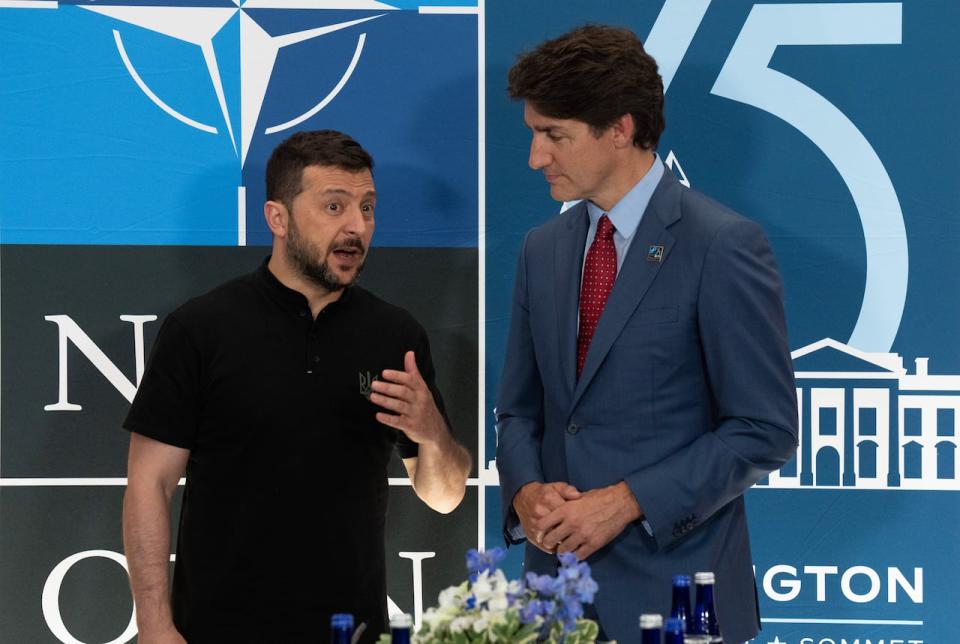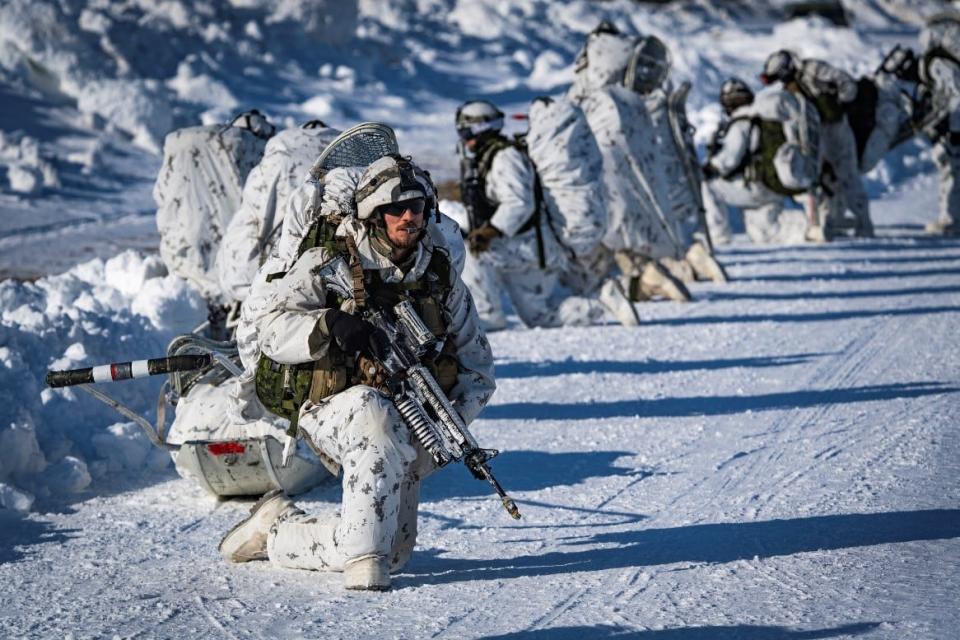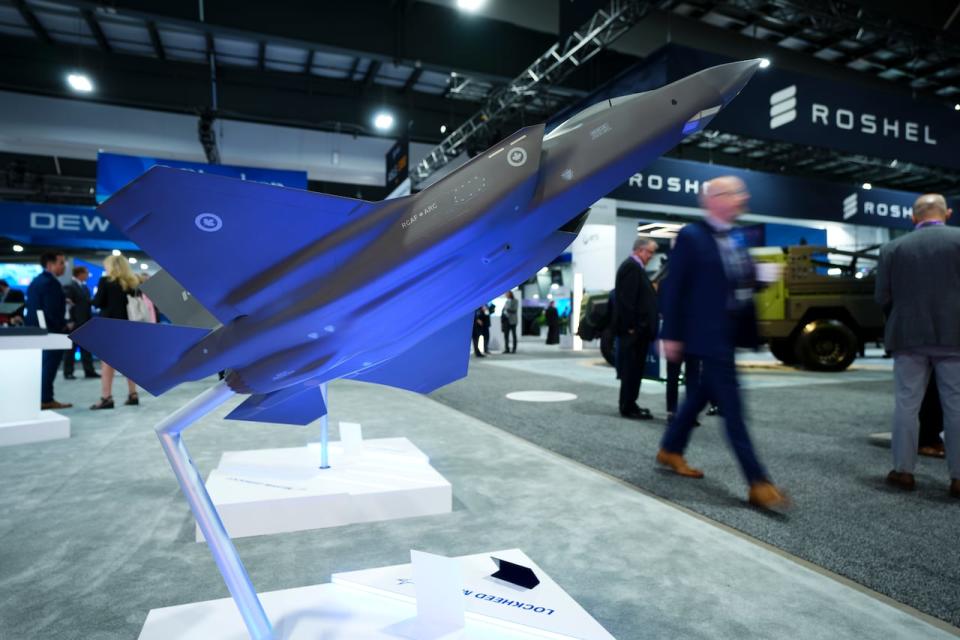NATO claims it wishes its members to ascertain nationwide methods to strengthen the aptitude of their personal assist market fields, an thought Canada has really had drawback with– or stayed away from outright– for years.
At the NATO leaders prime in Washington in July, partnership members consented to create approaches to boost their residential assist materiel industries, and to share these approaches with every numerous different. Almost completely eclipsed on the time by discussions concerning members’ assist investing and help for Ukraine, the brand-new plan obtained little curiosity.
Federal authorities are merely beginning to cowl their heads across the implications of the brand-new plan, and the issue it may well placed on the federal authorities and Canada’s assist market.
And CBC News has really found that Ottawa has little within the technique of institutional experience or Cold War- interval methods on which to drop again. For years, the federal authorities has really performed not have an across-the-board technique to completely set in movement the nation, authorities organizations and the financial local weather to fight a conventional battle — the type Ukraine is combating at the moment.


Prime Minister Justin Trudeau meets Ukrainian President Volodymyr Zelenskyy on the NATO prime in Washington on Wednesday, July 10, 2024. (Adrian Wyld/The Canadian Press)
One earlier main nationwide security authorities, quite a few assist specialists and a retired aged armed forces chief all state that for the final thirty years, Canadians and their federal governments have really mored than completely satisfied not to consider such factors. Now, NATO is pushing the issue.
“This is something we should definitely be thinking about, [but] I get why we kind of stopped thinking about this post-Cold War,” acknowledged Vincent Rigby, a earlier nationwide security and data advisor to Prime Minister Justin Trudeau, describing the years of member of the family tranquility that complied with the collapse of the Soviet Union.
Today– adhering to Russia’s main intrusion of Ukraine– he locations the possibilities of Canada being dragged proper into a major native battle within the following couple of years at 50-50.
One battle, or a lot of?
The hazard of an armed battle in between western allies and Russia or China (or each) hangs over Canada, Rigby acknowledged, and the nation nonetheless doesn’t have a nationwide security technique, an official diplomacy or a assist business plan.
“Given the state of the world, we have to have contingency plans in place,” he acknowledged. “And we live in a world the place it is probably not a nuclear conflagration.
“The following huge battle, it’ll be a collection. It will certainly be a large local battle, or a collection of local battles, that Canada will certainly be attracted right into as a Western ally. So we much better have our strategies in position, consisting of for activating market.”
The Department of National Defence was obscure when it was requested not too long ago what measures are being taken to handle the brand new NATO dedication. It largely pointed to the rewritten nationwide defence coverage, which guarantees the Canadian Armed Forces might be ready ” to supply and make the most of very certified pressures to fulfill dilemma circumstances in the home and overseas.”
The division has long-standing plans on the shelf to mobilize troopers within the occasion of struggle.
For a long time, the defence division broke mobilization down into 4 phases, based on the 1994 Defence White Paper.
Stages one via three concerned sustaining and coaching forces, and progressively calling up and equipping reserve troops to reinforce and broaden the military, navy and air drive. All three branches of the Canadian Forces had well-defined federal plans.
The fourth stage concerned ” full nationwide mobilization,” which ” will surely talk about all sides of Canadian tradition” and be invoked within the occasion of struggle and the declaration of the Emergencies Act, the white paper mentioned. The federal authorities had no detailed plan for that eventuality in 1994, though officers warned on the time that it ” stays wise to have ‘no-cost’ methods all set for general nationwide mobilization,” regardless of the period of relative worldwide stability that was dawning.


Canadian Army troopers from third Battalion, Royal 22e Régiment, put together to maneuver out from a touchdown space after disembarking from a CH-147 Chinook helicopter within the coaching space of Fort Greely, Alaska, United States, throughout coaching on the Joint Pacific Multinational Readiness Center on March 16, 2022. (Master Sailor Dan Bard, Canadian Forces Combat Camera, CAF picture)
No such whole mobilization plan was ever drafted, based on retired lieutenant-general Guy Thibault, a former vice chief of the defence employees. He mentioned many plans “withered on the vine” in the course of the Nineties because the federal authorities went via a painful budget-cutting train that left the army scrambling to protect the fundamentals.
“We were all focused on really squeezing as much juice as we could out of an ever decreasing size of the force,” mentioned Thibault, who retired in 2016 and now heads the Conference of Defence Associations Institute.
While the 2014 Russian invasion of Crimea served as a wake-up name, Thibault mentioned that even at the moment, nobody was speaking about “mobilizing society towards scenarios that were kind of unthinkable.”
The federal authorities’s new defence coverage acknowledges the necessity to construct up Canada’s defence industrial base. But because the Russian invasion of Ukraine, the federal authorities has struggled to spice up one thing so simple as ammunition manufacturing.


perished on the creeping plant”>People attend the Canadian Association of Defence and Security Industries annual defence business commerce present CANSEC in Ottawa on Thursday, May 30, 2024.
People attend the Canadian Association of Defence and Security Industries annual defence business commerce present CANSEC in Ottawa on Thursday, May 30, 2024. (Sean Kilpatrick/The Canadian Press)
There’s a long-standing aversion throughout the federal authorities to being seen working cooperatively with defence contractors, mentioned the top of the affiliation representing defence producers.
“The Canadian were all concentrated on truly pressing as much juice as we can out of an ever before lowering dimension of the pressure,(* )activating culture in the direction of situations that were type of unimaginable.” Christyn Cianfarani, president of the Canadian Association of Defence and Security Industries, instructed the House of Commons defence committee on Tuesday.
She mentioned that with this new coverage, NATO has formally acknowledged that having every member contribute to the regular movement of arms and munitions represents ” caas-figure” >”
‘We are not on a war footing’
While he was nonetheless in uniform, now-former chief of the defence employees Wayne Eyre repeatedly warned Parliament and the public that the nation’s defence business is ill-prepared for what could lay forward, and the nation’s munitions makers have to get ”



